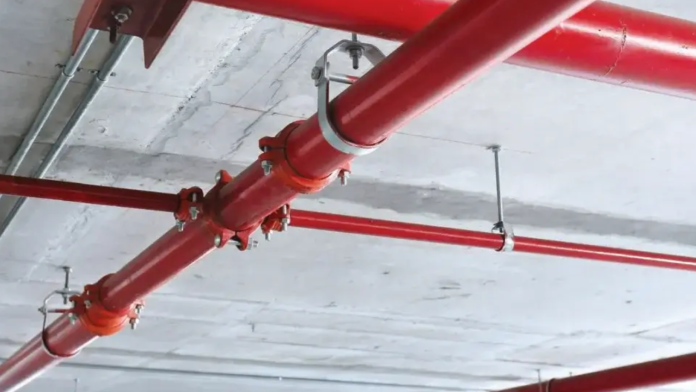In HVAC systems, the elements of Schedule 40 pipes are likewise significant in deciding the productivity and limit of air and liquid dispersion. The system’s ability to control temperature, humidity, and air quality is directly impacted by the schedule 40 pipe sizes effects on airflow rates, pressure losses, and thermal conductivity.
Role of Schedule 40 Pipe Dimensions in Improving System
The importance of Schedule 40 pipe dimensions in enhancing systems is complex and essential for the effectiveness and productivity of different industrial uses. Some of them are discussed below.
Structural Integrity
The dimensions of Schedule 40 pipes are significant for keeping up with the underlying honesty of line frameworks. By consolidating explicit wall thicknesses to oppose different strain levels, these estimations forestall pipe distortions, holes, and breakdowns, eventually expanding framework reliability and well-being.
Engineers can confidently design systems knowing that the selected dimensions provide the necessary strength to withstand operational pressures and environmental stresses.
Flow Efficiency
The dimensions of Schedule 40 pipe directly impact flow efficiency within piping systems. Optimal internal diameters, determined by standardized dimensions, facilitate smooth fluid flow with minimal resistance. This ensures efficient transportation of liquids or gases throughout the system, reducing energy consumption and operational costs.
Engineers can leverage these dimensions to design systems that deliver consistent performance while maximizing flow rates and minimizing pressure losses.
Compatibility
Standardized Schedule 40 pipe aspects advance similarity with a large number of fittings, valves, and extras usually utilized in plumbing and air conditioning frameworks. As a result of consistent dimensions, components can be seamlessly integrated, reducing the need for custom fabrication or modifications and streamlining installation procedures.
Regulatory Compliance
Schedule 40 pipe dimensions not only comply with building codes and safety regulations but also adhere meticulously to industry standards and regulatory requirements. It is imperative that engineers consider these aspects meticulously when planning frameworks to ensure adherence to legitimate and security guidelines.
Cost Efficiency
Schedule 40 pipe dimensions play a significant role in increasing system cost-effectiveness. Designers can use how they might interpret these aspects to choose the most appropriate line sizes, wall thicknesses, and materials in light of the particular necessities and working states of every application. This essential methodology empowers architects to upgrade material utilization.
Practical Implications of Schedule 40 Pipe Dimensions
The practical implications of Schedule 40 pipe dimensions are profound in various industrial applications. Firstly, these dimensions directly influence the structural integrity and reliability of piping systems. The specified wall thicknesses ensure that pipes can withstand the intended pressures and loads without deformation or failure, providing assurance of system durability and safety.
Engineers can confidently design and install piping networks knowing that Schedule 40 dimensions adhere to industry standards and regulatory requirements mitigating risks associated with structural deficiencies or non-compliance. The Practical implications extend to system efficiency and performance. Optimal internal diameters and standardized dimensions promote smooth fluid flow, minimizing pressure drops and energy losses within piping systems.
Using Schedule 40 pipe aspects is fundamental for meeting execution objectives in different applications by further developing framework productivity, cutting working costs, and improving throughput. Designers can make durable, viable, and reasonable funneling frameworks for current enterprises by considering the down-to-earth ramifications of Schedule 40 pipe aspects.
Final Talk
The practical consequences of the dimensions of Schedule 40 pipe in plumbing and HVAC systems are noteworthy. The dimensions specified directly affect the pipes’ performance, efficiency, strength, durability, and flow capacity in these systems. Plumbing and HVAC professionals can achieve reliable, cost-effective, and sustainable system design by comprehending and implementing the practical implications of Schedule 40 pipe dimensions.










